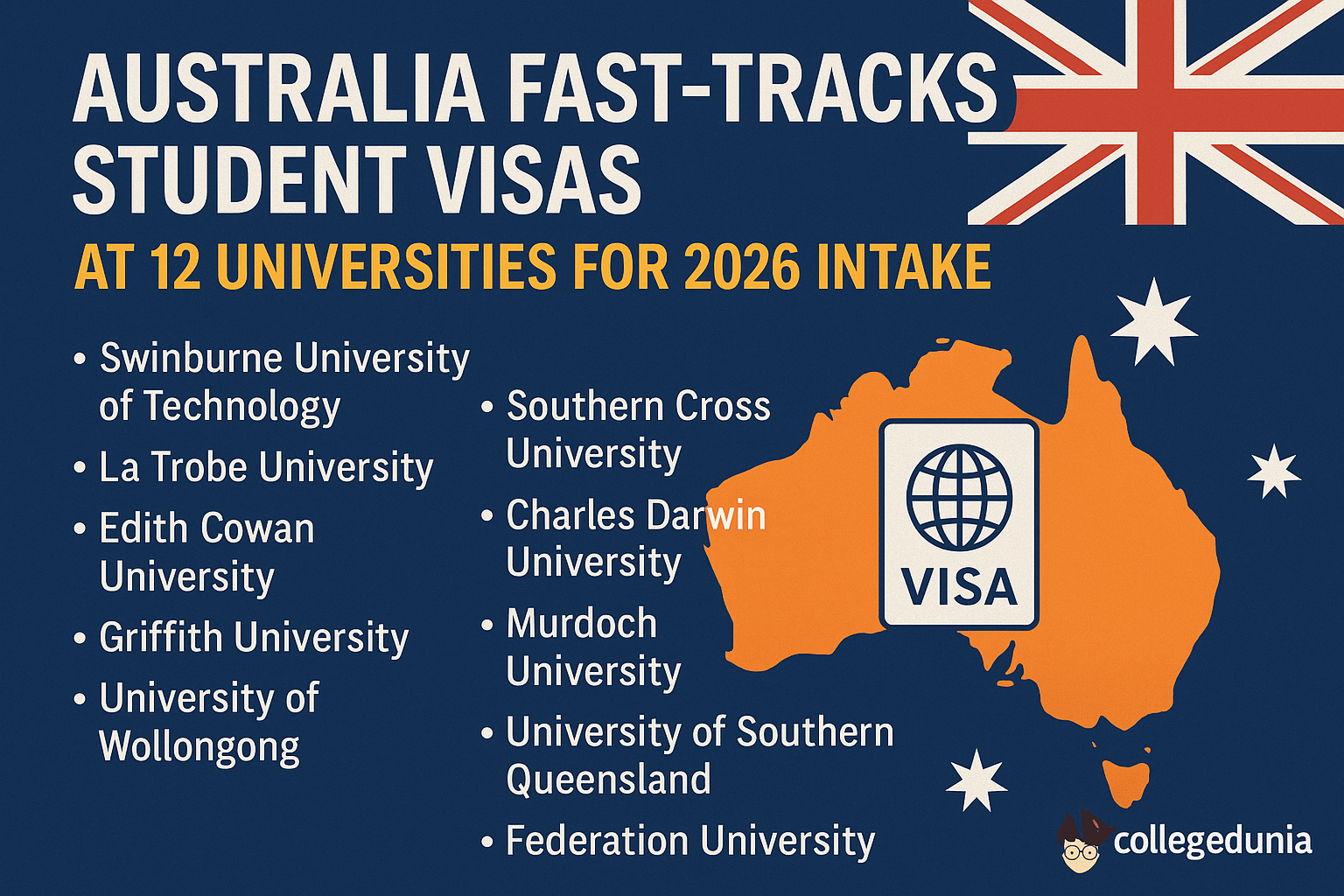Jasmine Grover Content Strategy Manager
Content Strategy Manager | Updated On - Sep 25, 2025
In a major move to manage growing international student demand, the Australian Department of Home Affairs has announced a priority student visa processing system for 12 universities across the country. Starting with the 2026 Australia intake, applicants admitted to these institutions will have their visas processed faster than standard applicants.
This development comes amid increasing competition among global education destinations such as the UK, Canada, and the US, where policy changes are reshaping student flows. By offering faster processing, Australia aims to strengthen its appeal to students from Vietnam, Malaysia, Indonesia, and India – four of its largest feeder markets.
Check Out: Study in Australia: Top Universities, Benefits, and Top Programs

Universities with Fast-Track Student Visa Processing – Australia 2026
The 12 universities chosen represent a mix of Australia’s well-known and mid-tier institutions. Among them are:
| University | Priority Seats for International Students |
|---|---|
| Swinburne University of Technology | 4,523 |
| La Trobe University | 4,100 |
| Edith Cowan University | 3,800 |
| Griffith University | 3,500 |
| University of Wollongong | 2,950 |
| Charles Darwin University | 2,100 |
| University of Canberra | 1,750 |
| Southern Cross University | 1,300 |
| Federation University Australia | 950 |
| Central Queensland University (CQU) | 700 |
| University of Southern Queensland | 50 |
| Torrens University Australia | 250 |
Smaller allocations include Southern Cross University (1,300 seats) and University of Southern Queensland (just 50 seats). The government says this distribution is designed to prevent top universities from being overwhelmed while helping smaller campuses attract students.
What does it mean for Indian Students?
For students, especially from Southeast Asia, the new system means:
- Faster visa turnaround times – reduced uncertainty before classes begin.
- Balanced distribution – smaller universities may see more international enrolments.
- No change in visa approval – the priority applies to speed, not outcome.
For Indian applicants, who make up one of the largest international student groups in Australia, this could mean better clarity in admission planning—especially when compared with Canada’s tighter student intake caps and the US’s stricter H-1B pathways.
Also Read
Policy Context: Tighter Immigration, But More Seats
This reform comes alongside stricter overall migration rules:
- Post-study work rights reduced to 2–4 years (from 4–6 years).
- English test requirement increased to IELTS 6.0–6.5.
- Proof of funds raised to AUD 29,710 (approx. ₹16.3 lakh).
Despite these tougher requirements, Australia hosted 1.1 million international students in 2023, signaling its continued popularity. By combining stricter standards with faster visa processing for select institutions, policymakers hope to balance quality with quantity.
Check Out: Australian Student Visa
Why Southeast Asia Matters?
Vietnam, Malaysia, and Indonesia have emerged as strategic growth markets for Australia’s education sector. Students from these countries contribute significantly to enrolments in Melbourne, Sydney, and Brisbane. Fast-track visas are seen as a response to this demand, ensuring smoother mobility for regional students. For India, although not the central focus of this policy, the ripple effect could still be significant—particularly for students aiming at institutions like La Trobe, Swinburne, and Griffith, which already host large Indian cohorts.
Australia’s decision to fast-track student visas at 12 universities marks a strategic recalibration of its international education policy. While tightening requirements, it is also ensuring smoother access for priority institutions, especially benefiting students from Southeast Asia and indirectly supporting Indian applicants. For prospective students, this means it is now more important than ever to choose the right university—since admission at a priority-listed institution could save critical weeks in the visa process.



Comments